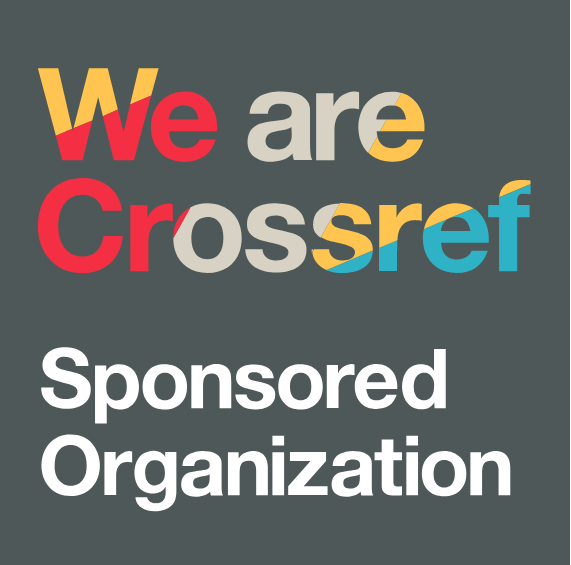Fenomena Pinjaman Online sebagai Bentuk Kenakalan Terselubung di Kalangan Generasi Z: Studi Perspektif Sosial dan Kaitannya dengan Tujuan Pembangunan Berkelanjutan (SDGs)
DOI:
https://doi.org/10.38035/jhesm.v3i2.323Keywords:
Generasi Z, Pinjaman Online, Kenakalan Remaja, Literasi Keuangan, SDGsAbstract
Fenomena pinjaman online (pinjol) semakin marak di kalangan Generasi Z, tidak hanya sebagai solusi keuangan cepat, tetapi juga sebagai bentuk kenakalan terselubung yang mencerminkan krisis literasi finansial dan kontrol diri. Penelitian ini bertujuan untuk mengkaji faktor-faktor sosial yang mendorong Generasi Z terjerat pinjol serta menganalisis dampaknya dalam konteks pembangunan berkelanjutan (SDGs). Dengan pendekatan kualitatif dan metode studi kasus, data dikumpulkan melalui wawancara mendalam terhadap lima responden berusia 21–24 tahun yang memiliki pengalaman langsung atau tidak langsung dengan pinjol. Hasil penelitian menunjukkan bahwa dorongan ekonomi, pengaruh lingkungan, serta gaya hidup konsumtif menjadi faktor dominan yang mendorong keterlibatan remaja dalam pinjol. Dampak negatif yang ditemukan mencakup ketergantungan, ancaman terhadap data pribadi, tekanan psikologis, dan konflik sosial. Temuan ini memperkuat pentingnya edukasi literasi keuangan dan penguatan karakter sejak dini sebagai strategi preventif. Penelitian ini memberikan kontribusi terhadap pemahaman bentuk-bentuk kenakalan remaja kontemporer dan menjadi dasar bagi kebijakan yang mendukung pencapaian SDGs, khususnya dalam aspek pendidikan, kesejahteraan, dan ketahanan sosial ekonomi.
References
Bai, C., Zhou, H., & Sarkis, J. (2023). Evaluating Industry 4.0 technology and sustainable development goals – a social perspective. International Journal of Production Research, 61(23), 8094–8114. https://doi.org/10.1080/00207543.2022.2164375
Chen, D., Deakin, S., Johnston, A., & Wang, B. (2021). Too Much Technology and Too Little Regulation? The Spectacular Demise of P2P Lending in China. Accounting, Economics, and Law: A Convivium. https://doi.org/10.1515/ael-2021-0056
Diaz-Sarachaga, J. M., & Ariza-Montes, A. (2022). The role of social entrepreneurship in the attainment of the sustainable development goals. Journal of Business Research, 152, 242–250. https://doi.org/10.1016/j.jbusres.2022.07.061
Eskelinen, T. (2021). Interpreting the Sustainable Development Goals through the Perspectives of Utopia and Governance. Forum for Development Studies, 48(2), 179–197. https://doi.org/10.1080/08039410.2020.1867889
Liu, X., Li, Y., Dai, C., & Zhang, H. (2024). A hierarchical attention-based feature selection and fusion method for credit risk assessment. Future Generation Computer Systems, 160, 537–546. https://doi.org/10.1016/j.future.2024.06.036
Liu, X., Wang, H., Zhang, K., Lin, K., Shi, Q., & Zeng, F. (2024). Credit Default of P2P Online Loans Based on Logistic Regression Model Under Factor Space Theory Risk Prediction Research. In Z. Shi, J. Torresen, & S. Yang (Eds.), Intelligent Information Processing XII (Vol. 703, pp. 410–424). Springer Nature Switzerland. https://doi.org/10.1007/978-3-031-57808-3_30
Liu, Y., Li, X., & Zheng, Z. (Eric). (2024). Consequences of China’s 2018 Online Lending Regulation and the Promise of PolicyTech. Information Systems Research, 35(3), 1235–1256. https://doi.org/10.1287/isre.2021.0580
Lowry, P. B., Xiao, J., & Yuan, J. (2023). How Lending Experience and Borrower Credit Influence Rational Herding Behavior in Peer-to-Peer Microloan Platform Markets. Journal of Management Information Systems, 40(3), 914–952. https://doi.org/10.1080/07421222.2023.2229128
Omahne, V., Knez, M., & Obrecht, M. (2021). Social Aspects of Electric Vehicles Research—Trends and Relations to Sustainable Development Goals. World Electric Vehicle Journal, 12(1), 15. https://doi.org/10.3390/wevj12010015
Pakkan, S., Sudhakar, C., Tripathi, S., & Rao, M. (2023). A correlation study of sustainable development goal (SDG) interactions. Quality & Quantity, 57(2), 1937–1956. https://doi.org/10.1007/s11135-022-01443-4
Raiden, A., & King, A. (2021). Social value, organisational learning, and the sustainable development goals in the built environment. Resources, Conservation and Recycling, 172, 105663. https://doi.org/10.1016/j.resconrec.2021.105663
Rong, Y., Liu, S., Yan, S., Huang, W. W., & Chen, Y. (2023). Proposing a new loan recommendation framework for loan allocation strategies in online P2P lending. Industrial Management & Data Systems, 123(3), 910–930. https://doi.org/10.1108/IMDS-07-2022-0399
Saputra, R., Wala, G. N., & Muliawan, A. (2023). Pengaruh Media Sosial dan Lingkungan terhadap Berperilaku Remaja (Study Literature Review). Jurnal Greenation Sosial dan Politik, 1(4), 153-164. https://doi.org/10.38035/jgsp.v1i4
Smith, H., Discetti, R., Bellucci, M., & Acuti, D. (2022). SMEs engagement with the Sustainable Development Goals: A power perspective. Journal of Business Research, 149, 112–122. https://doi.org/10.1016/j.jbusres.2022.05.021
Song, Y., & Wu, R. (2022). The Impact of Financial Enterprises’ Excessive Financialization Risk Assessment for Risk Control based on Data Mining and Machine Learning. Computational Economics, 60(4), 1245–1267. https://doi.org/10.1007/s10614-021-10135-4
Tayefi Nasrabadi, M., Larimian, T., Timmis, A., & Yigitcanlar, T. (2024). Mapping four decades of housing inequality research: Trends, insights, knowledge gaps, and research directions. Sustainable Cities and Society, 113, 105693. https://doi.org/10.1016/j.scs.2024.105693
Yeh, S.-C., Wu, A.-W., Yu, H.-C., Wu, H. C., Kuo, Y.-P., & Chen, P.-X. (2021). Public Perception of Artificial Intelligence and Its Connections to the Sustainable Development Goals. Sustainability, 13(16), 9165. https://doi.org/10.3390/su13169165
Downloads
Published
Issue
Section
License
Copyright (c) 2025 Andika Putra Setiawan, Dennys Christensen, Nia Ramadhani, Signal Melani Ridwan, Syifa Nur Azizah

This work is licensed under a Creative Commons Attribution 4.0 International License.
Hak cipta :
Penulis yang mempublikasikan manuskripnya di jurnal ini menyetujui ketentuan berikut:
- Hak cipta pada setiap artikel adalah milik penulis.
- Penulis mengakui bahwa JHESM berhak menjadi yang pertama menerbitkan dengan lisensi Creative Commons Attribution 4.0 International (Attribution 4.0 International CC BY 4.0) .
- Penulis dapat mengirimkan artikel secara terpisah, mengatur distribusi non-eksklusif manuskrip yang telah diterbitkan dalam jurnal ini ke versi lain (misalnya, dikirim ke repositori institusi penulis, publikasi ke dalam buku, dll.), dengan mengakui bahwa manuskrip telah diterbitkan pertama kali di JHESM.





















